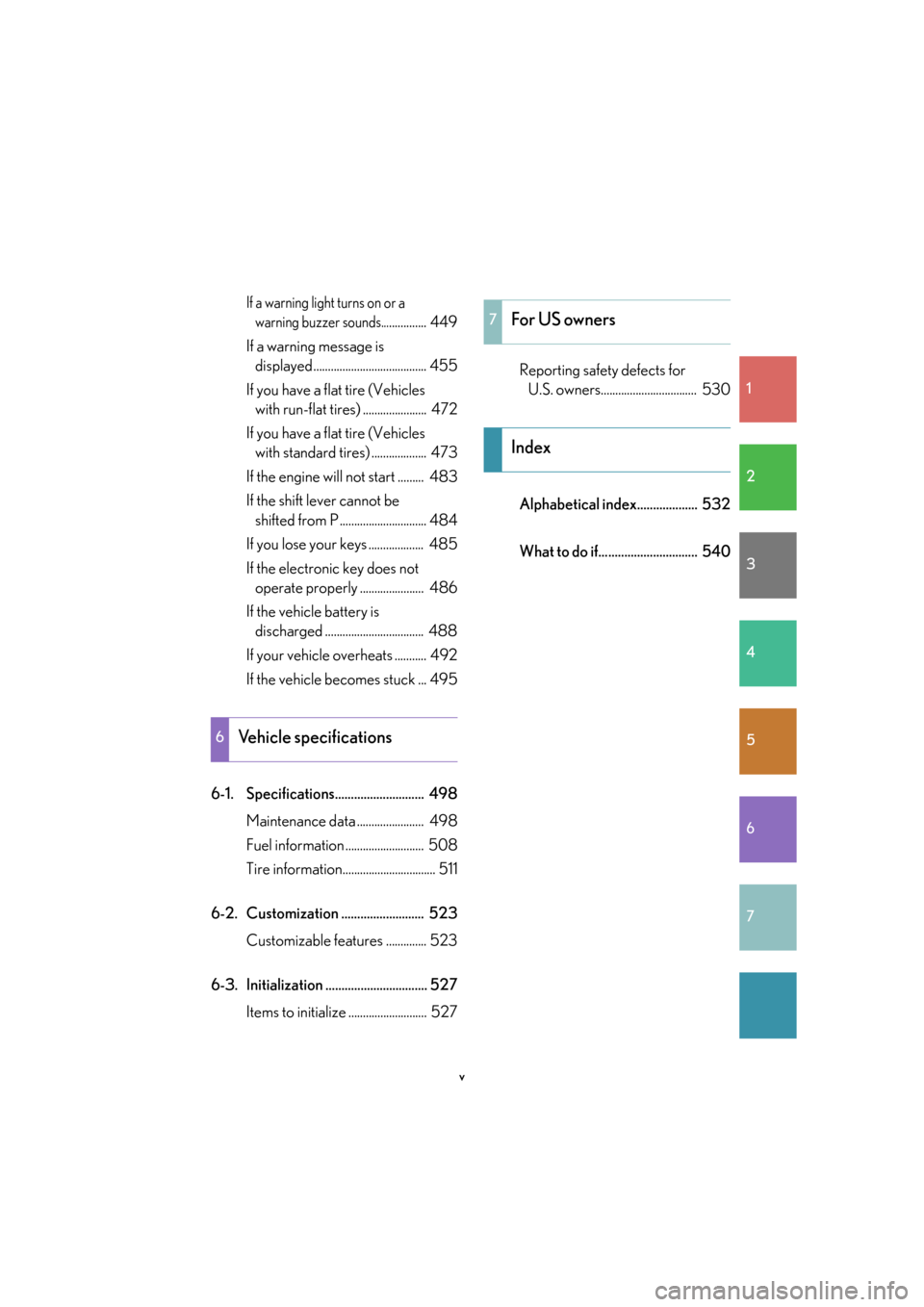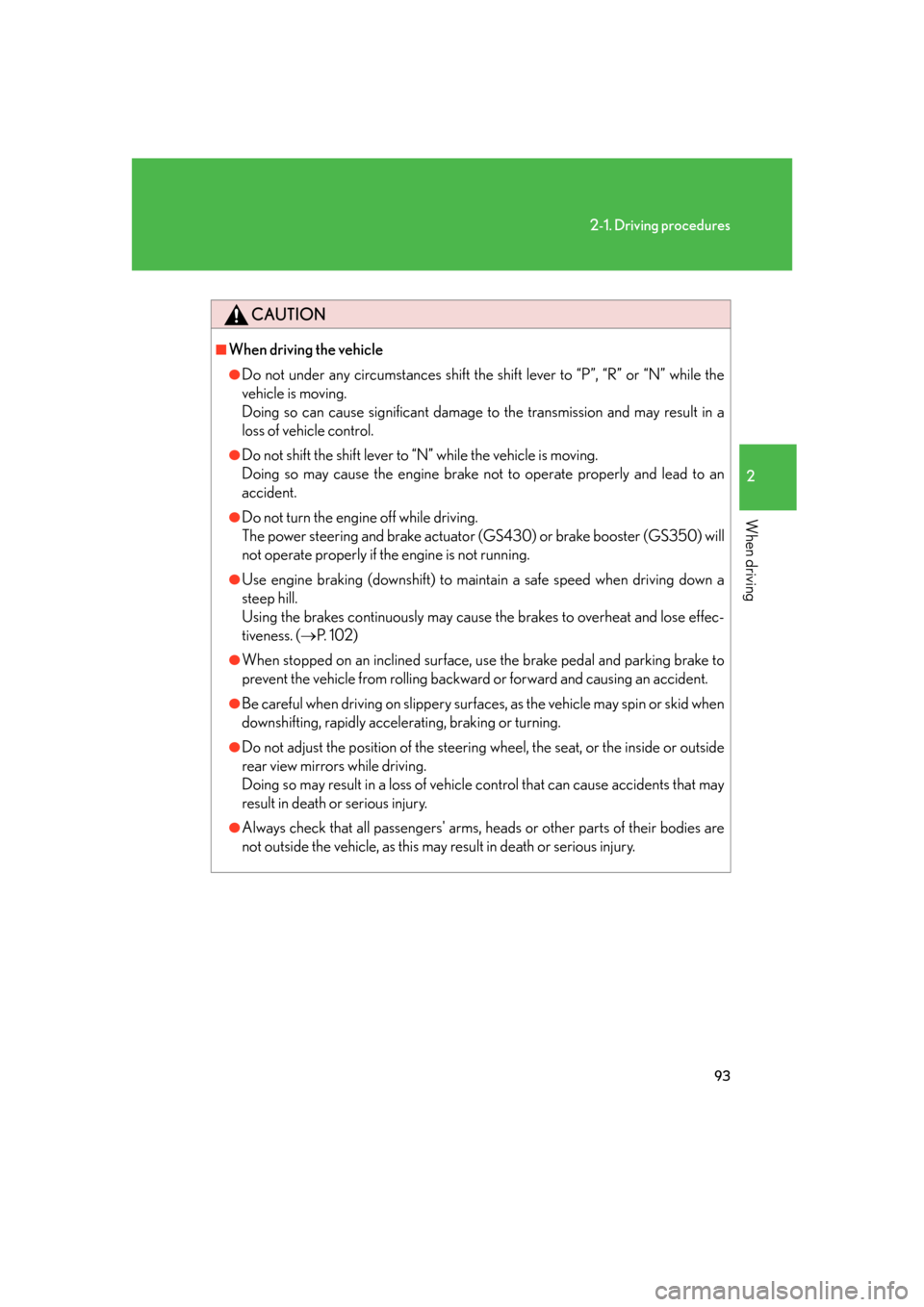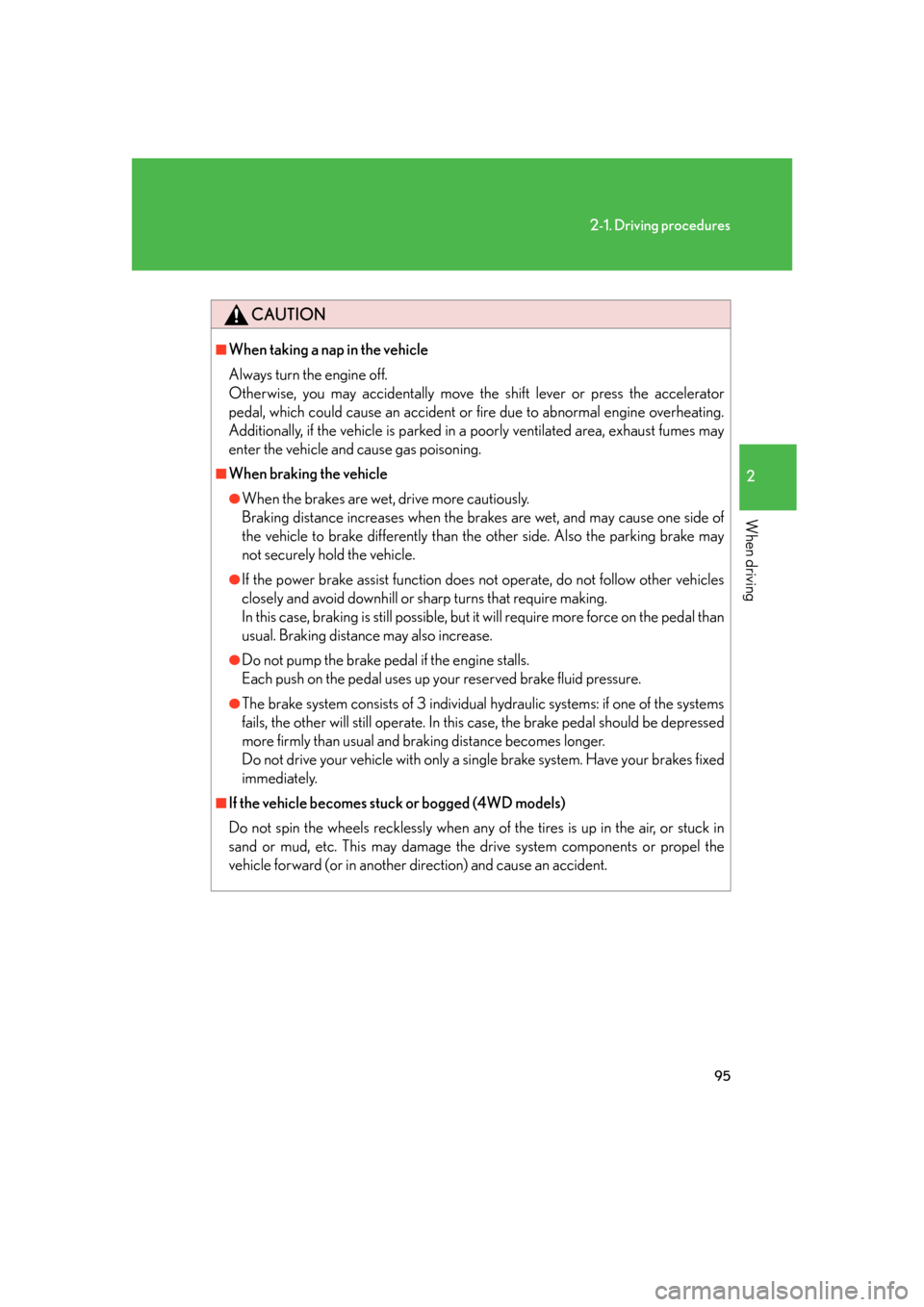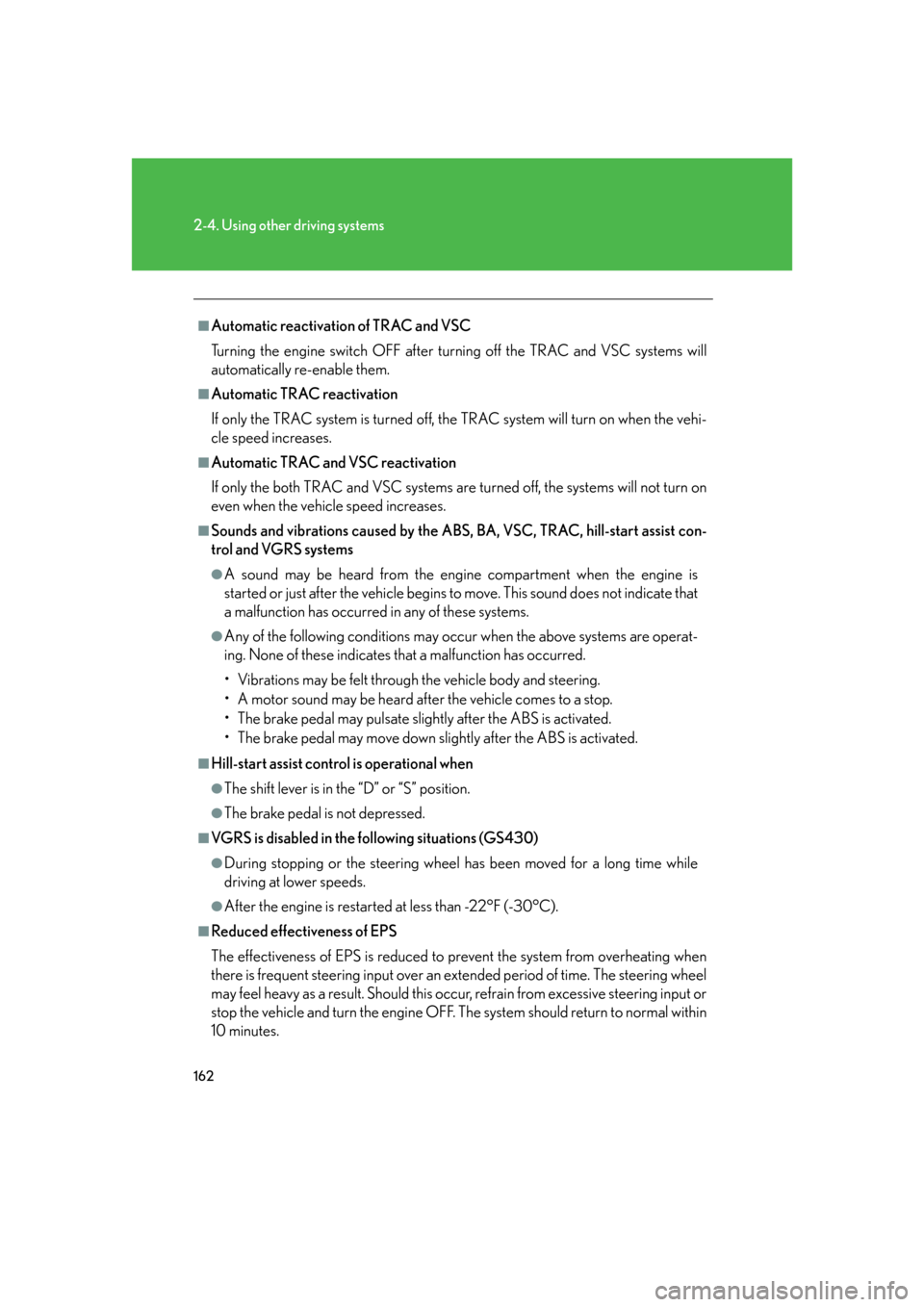Page 5 of 562

1
2
3
4
5
6
7
v
If a warning light turns on or a
warning buzzer sounds................ 449
If a warning message is
displayed....................................... 455
If you have a flat tire (Vehicles
with run-flat tires) ...................... 472
If you have a flat tire (Vehicles
with standard tires) ................... 473
If the engine will not start ......... 483
If the shift lever cannot be
shifted from P .............................. 484
If you lose your keys ................... 485
If the electronic key does not
operate properly ...................... 486
If the vehicle battery is
discharged .................................. 488
If your vehicle overheats ........... 492
If the vehicle becomes stuck ... 495
6-1. Specifications............................ 498 Maintenance data ....................... 498
Fuel information ........................... 508
Tire information................................ 511
6-2. Customization .......................... 523 Customizable features .............. 523
6-3. Initialization ................................ 527 Items to initialize ........................... 527 Reporting safety defects for
U.S. owners................................. 530
Alphabetical index................... 532
What to do if............................... 540
6Vehicle specifications
7For US owners
Index
Page 113 of 562

93
2-1. Driving procedures
2
When driving
CAUTION
■When driving the vehicle
●Do not under any circumstances shift the shift lever to “P”, “R” or “N” while the
vehicle is moving.
Doing so can cause significant damage to the transmission and may result in a
loss of vehicle control.
●Do not shift the shift lever to “N” while the vehicle is moving.
Doing so may cause the engine brake not to operate properly and lead to an
accident.
●Do not turn the engine off while driving.
The power steering and brake actuator (GS430) or brake booster (GS350) will
not operate properly if the engine is not running.
●Use engine braking (downshift) to maintain a safe speed when driving down a
steep hill.
Using the brakes continuously may cause the brakes to overheat and lose effec-
tiveness. ( P. 1 0 2 )
●When stopped on an inclined surface, use the brake pedal and parking brake to
prevent the vehicle from rolling backward or forward and causing an accident.
●Be careful when driving on slippery surfaces, as the vehicle may spin or skid when
downshifting, rapidly accelerating, braking or turning.
●Do not adjust the position of the steering wheel, the seat, or the inside or outside
rear view mirrors while driving.
Doing so may result in a loss of vehicle control that can cause accidents that may
result in death or serious injury.
●Always check that all passengers' arms, heads or other parts of their bodies are
not outside the vehicle, as this may result in death or serious injury.
Page 115 of 562

95
2-1. Driving procedures
2
When driving
CAUTION
■When taking a nap in the vehicle
Always turn the engine off.
Otherwise, you may accidentally move the shift lever or press the accelerator
pedal, which could cause an accident or fire due to abnormal engine overheating.
Additionally, if the vehicle is parked in a poorly ventilated area, exhaust fumes may
enter the vehicle and cause gas poisoning.
■When braking the vehicle
●When the brakes are wet, drive more cautiously.
Braking distance increases when the brakes are wet, and may cause one side of
the vehicle to brake differently than the other side. Also the parking brake may
not securely hold the vehicle.
●If the power brake assist function does not operate, do not follow other vehicles
closely and avoid downhill or sharp turns that require making.
In this case, braking is still possible, but it will require more force on the pedal than
usual. Braking distance may also increase.
●Do not pump the brake pedal if the engine stalls.
Each push on the pedal uses up yo ur reserved brake fluid pressure.
●The brake system consists of 3 individual hydraulic systems: if one of the systems
fails, the other will still operate. In this case, the brake pedal should be depressed
more firmly than usual and braking distance becomes longer.
Do not drive your vehicle with only a single brake system. Have your brakes fixed
immediately.
■If the vehicle becomes stuc k or bogged (4WD models)
Do not spin the wheels recklessly when any of the tires is up in the air, or stuck in
sand or mud, etc. This may damage the drive system components or propel the
vehicle forward (or in another direction) and cause an accident.
Page 129 of 562
109
2-2. Instrument cluster
2
When driving
NOTICE
■To prevent damage to the engine and its components
●Do not let the indicator needle of the tachometer enter the red zone, which indi-
cates the maximum engine speed.
●The engine may be overheating if the temperature gauge is in the red zone (“H”). In
this case, immediately stop the vehicle in a safe place. Check the engine after it has
cooled completely. ( P. 4 9 2 )
■To activate the light sensitivity function properly
Do not affix a sticker or window tint to the rear window glass, or put an object
behind the rear seat.
Page 143 of 562
123
2-3. Operating the lights and windshield wipers
2
When driving
Headlight cleaner switch
■The headlight cleaner can be operated when
When the engine switch is in “IG-ON” mo de
and the headlight switch is turned
ON.
NOTICE
■When the washer fluid tank is empty
Do not use this function when the washer fluid tank is empty. This may cause the
washer fluid pump to overheat.
Washer fluid can be sprayed on the headlights.
Press the switch to clean the
headlights.
Page 182 of 562

162
2-4. Using other driving systems
■Automatic reactivation of TRAC and VSC
Turning the engine switch OFF after turning of
f the TRAC and VSC systems will
automatically re-enable them.
■Automatic TRAC reactivation
If only the TRAC system is turned off, th e
TRAC system will turn on when the vehi-
cle speed increases.
■Automatic TRAC and VSC reactivation
If only the both TRAC and VSC systems are tur
ned off, the systems will not turn on
even when the vehicle speed increases.
■Sounds and vibrations caused by the ABS, BA, VSC, TRAC, hill-start assist con-
trol and VGRS systems
●A sound may be heard from the engine compartment when the engine is
started or just after the vehicle begins to move. This sound does not indicate that
a malfunction has occurred in any of these systems.
●Any of the following conditions may occur when the above systems are operat -
ing. None of these indicates that a malfunction has occurred.
• Vibrations may be felt through the vehicle body and steering.
• A motor sound may be heard after the vehicle comes to a stop.
• The brake pedal may pulsate slightly after the ABS is activated.
• The brake pedal may move down slightly af
ter the ABS is activated.
■Hill-start assist control is operational when
●The shift lever is in the “D” or “S” position.
●The brake pedal is not depressed.
■VGRS is disabled in the following situations (GS430)
●During stopping or the steering wheel has been moved for a long time while
driving at lower speeds.
●After the engine is restarted at less than -22°F (-30°C).
■Reduced effectiveness of EPS
The effectiveness of EPS is reduced to prevent the system from overheating when
th
ere is frequent steering input over an extended period of time. The steering wheel
may feel heavy as a result. Should this occur, refrain from excessive steering input or
stop the vehicle and turn the engine OFF. Th e system should return to normal within
10 minutes.
Page 341 of 562
321
3-7. Other interior features
3
Interior features
Cigarette lighter
■The cigarette lighter can be used when
The engine switch is in “ACC” or “IG-ON” mode.
CAUTION
■To avoid burns or fires
●Do not touch the metal parts of the cigarette lighter.
●Do not hold the cigarette lighter down. It could overheat and cause a fire.
●Do not insert anything other than th e cigarette lighter into the outlet.
Slide the lid back to open,
and push the cigarette lighter
down.
The cigarette lighter will pop up
when ready for use.
Page 343 of 562
323
3-7. Other interior features
3
Interior features
Seat heaters (if equipped)
■The seat heaters can be used when
The engine switch is in “IG-ON” mode.
■When not in use
Set the dial to “0”. The indicator light turns off.
CAUTION
■Burns
●Use caution when seating the following persons in a seat with the seat heater on
to avoid the possibility of burns:
• Babies, small children, the elderly, the sick and the disabled
• Persons with sensitive skin
• Persons who are fatigued
• Persons who have taken alcohol or drugs that induce sleep (sleeping drugs,
cold remedies, etc.)
●Do not cover the seat with anything when using the seat heater.
Using the seat heater with a blanket or cushion increases the temperature of the
seat and may lead to overheating.
Heats the seats
The indicator light comes on.
The higher the number, the
w
armer the seats become.